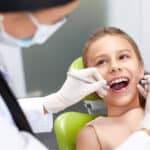The new AAO advocacy toolkit is aimed at informing lawmakers about its concerns with direct-to-consumer orthodontic treatment.
The American Association of Orthodontists (AAO) has announced the development of several new resources for communicating concerns about direct-to-consumer (DTC) orthodontic treatment aimed at informing dental board members and federal and state legislators.
The DTC resources include a 25-page position paper explaining the AAO’s concerns with common elements of DTC treatment. The position paper cites credible, peer-reviewed scientific evidence and recognized authorities in the specialty to support the AAO’s positions.
“We are excited to combine the AAO’s advocacy messaging with the strength of the AAO’s scientific and academic resources,” said AAO president Ken Dillehay, DDS, MS. “For the first time, we have a resource that clearly shows that the AAO’s advocacy positions on teledentistry and DTC are supported by strong scientific evidence, which demonstrates why the law should include these patient protections.”
In addition to the position paper, AAO also offers two single-page handouts that summarize the AAO position on in-person examinations and radiographic images and supporting evidence.
Also included in the AAO advocacy toolkit is a short handout summarizing testimony by a former DTC treating doctor from a class action lawsuit. The doctor’s testimony raises concerns about whether some DTC treatments comply with applicable standards of care.
A new position paper also lays out concerns related to informed consent in the DTC treatment setting. The paper addresses questions about whether a patient can give effective informed consent to treatment if they haven’t had the opportunity to ask questions of the treating doctor.
Finally, three additional resources examine the AAO’s concerns with public policy arguments made by the American Teledentistry Association (ATDA). The ATDA has appeared in dental board hearings and state legislative sessions, arguing against restrictions on teledentistry. Two of the AAO’s new resources point out flaws in the evidence the ATDA cites to support these arguments. A third handout raises concerns about the ATDA’s close affiliation with certain DTC companies.
“It is our hope that these new resources will better communicate to dental boards and legislatures the reasons why we believe that the laws need to protect orthodontic patients,” said Dillehay. “We strongly encourage AAO members to utilize these new resources in their efforts to educate lawmakers, patients, and the general public.”
The new resources are available to non-AAO members. They can be found at www.orthofacts.org or accessed by clicking the Advocacy Resources tab at the top of the AAO member webpage.
Photo 198326403 © Tashatuvango










